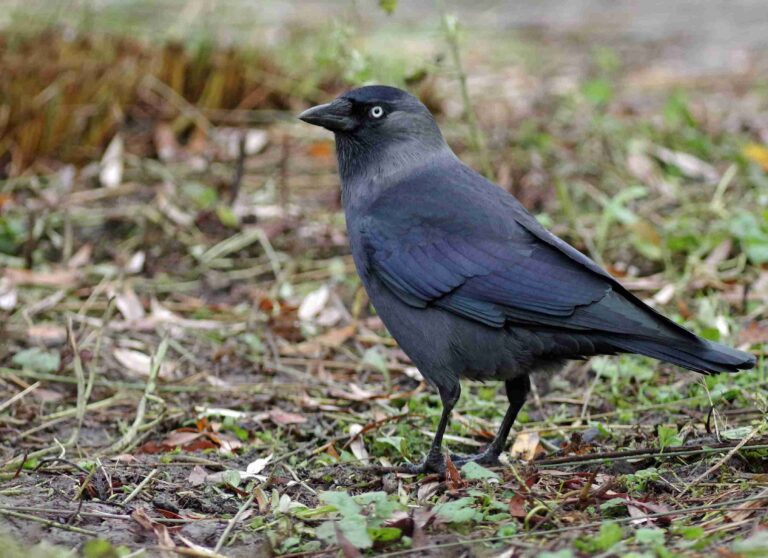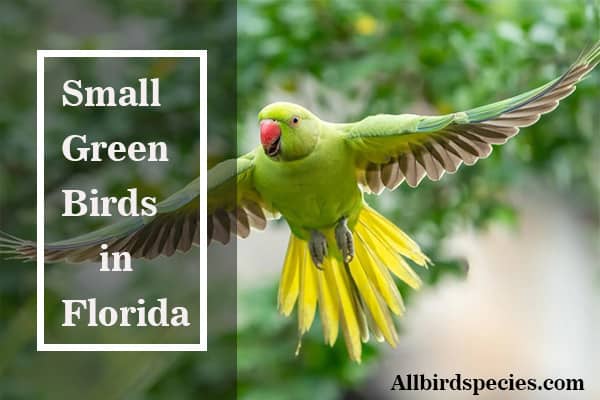The 7 Species of Chickadees (With Photos)
Chickadees Species are small, charming birds that sing beautifully. If you see one in your backyard, consider yourself lucky! There are seven kinds of chickadees, each with its own special details. Want to invite them over? Here are some easy tips to make your backyard a chickadee hotspot. Remember, these birds are not only cute but also very interesting to learn about!
All About the Chickadees Species
Friendly and cute, chickadees are curious little birds loved by many people. They are known for their sweet personalities and their “dee-dee-dee” song, which makes them easy to recognize. In North America, there are 7 different types of chickadees, each with its own special features.
- Black-Capped
- Mountain
- Boreal
- Carolina
- Gray-Headed
- Mexican
- Chestnut-Backed
Before we dive into the details of each type of chickadee, let’s talk about what they all have in common. All chickadees share similar songs, diets, shapes, and sizes. These common traits make chickadees easy to identify, no matter which type you see.
Chickadee Song
It’s no surprise that the chickadee got its name. This chatty bird has a unique call and wants everyone to hear it! Chickadees sing a “chick-a-dee-dee-dee” song, which sounds a bit different depending on the species. Besides their famous call, they also mix in some high-pitched, wheezy notes that get higher when there are predators nearby.
Do You Kow What Chickadees Eat?
Chickadees are famous for eating insects. They’re not picky at all! They will eat insects no matter what stage they’re in: whether they’re eggs, larvae (which are like baby insects), pupae (which is when they’re wrapped up and changing into adults), or fully grown adult insects.
Some of their favorite foods include sunflower seeds, peanuts, chopped nuts, high-fat suet, and peanut butter.
Physical Characteristics of Chickadees
Chickadees are like the little superheroes of the bird world when it comes to eating insects. They’re not fussy eaters at all. They’ll happily munch on insects in any form—whether they’re just eggs, wriggly larvae, cozy pupae, or buzzing adults. It’s like they have a buffet of bugs to choose from every day!
And here’s something cool about them: even though each type of chickadee has its own special look, they all share some common features. They’re usually about 4 to 6 inches long, which is pretty tiny. They have cute white cheeks, dark tops on their heads, and gray wings and tails. Because of their dark head markings, they look like they’re wearing tiny black masks. That’s why a group of them is called a “bandit.” It’s as if they’re tiny masked bandits of the bird world!
Chickadees are known for their short necks, large heads, and round bodies. They have strong legs and feet, which help them cling to branches and bird feeders. Their small size and agile flight make them quick and nimble in the trees. Despite their similar basic features, chickadees can have different color patterns and markings depending on the species, making each one unique in its own way.
Here We’ll Learn 7 Different Types Of Chickadee Species!!
Black-Capped Chickadee (Poecile atricapillus)
The Black-Capped Chickadee has the widest range of all the chickadee species in the US. They can be found throughout most of North America, from Alaska and Canada all the way down to New Mexico and Tennessee.
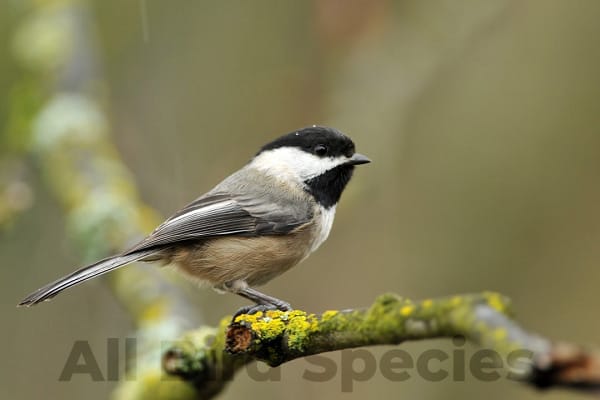
Black-Capped Chickadees look a lot like Carolina Chickadees but have some differences. They have longer tails, more white in their wings, and a broader throat patch. Additionally, they have a unique two-note whistle that sounds like “fee-bee,” which helps to identify them.
Mountain Chickadee (Poecile gambeli)
As their name suggests, Mountain Chickadees live in the mountains of the coniferous forests in western North America. You can recognize them by the white stripe above their eyes that cuts through their black caps.
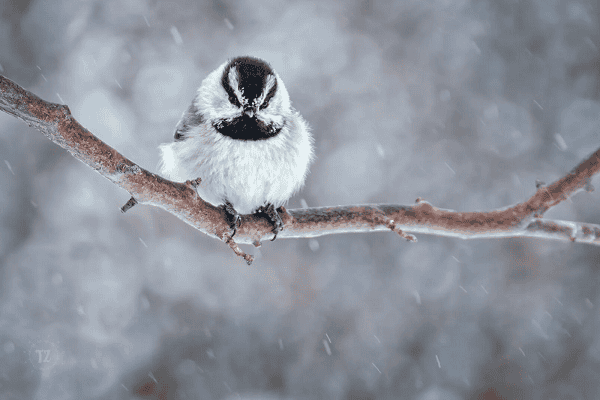
Mountain Chickadees have a hoarse, almost raspy call that sounds like a Black-Capped Chickadee with a sore throat. This distinctive call makes them easy to identify in their mountainous habitats.
Boreal Chickadee (Poecile hudsonicus)
This bird looks different from some of its chickadee cousins because it has a brown cap. The Boreal Chickadee lives in the boreal forests of Canada, Alaska, and the northeastern states of the contiguous U.S.
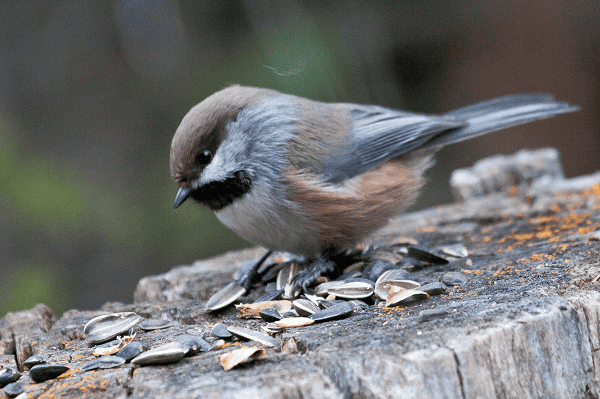
You can recognize this species by its slow and scratchy call, which sets it apart from other chickadees.
Carolina Chickadee (Poecile carolinensis)
If you look throughout the south-central, Mid-Atlantic, and southeastern segments of the U.S., you’ll likely find the Carolina Chickadee. These birds are popular in forests, suburban yards, and urban gardens. Their territories often overlap with those of the Black-Capped Chickadee, leading to confusion between the two. However, there are some differences that set them apart.
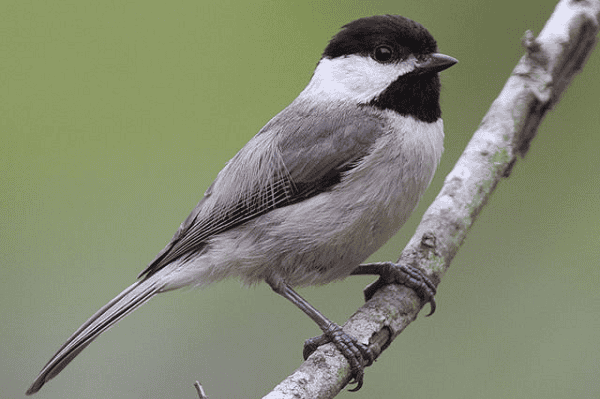
The Carolina Chickadee has a higher and faster call compared to the Black-Capped Chickadee. Additionally, their white cheeks become pale gray towards the nape, while the cheeks of the Black-Capped Chickadee remain completely white. These distinctions help birdwatchers identify each species correctly.
Gray-headed Chickadee (Poecile cinctus)

The Gray-headed chickadee is a very special bird because it’s the most uncommon chickadee in North America. Imagine a map of North America. This bird only lives in a tiny part of it, way up north. It’s found in some faraway places in Alaska and just a little bit into the Yukon Mountains in Canada. That’s its home! So, if you ever go to these cold, distant places, keep an eye out for this rare little bird with a gray head.
Mexican Chickadee (Poecile sclateri)
The Mexican chickadee is a special bird that lives in the United States. It’s quite rare! Imagine a map of the U.S. Now, focus on the pine and spruce-fir forests in the Chiricahua Mountains of Arizona and the Animas Mountains of New Mexico.
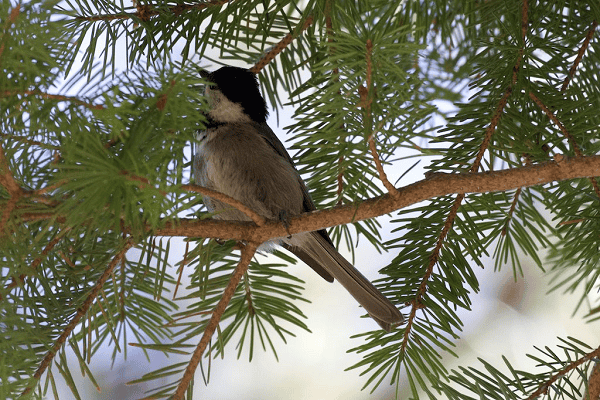
That’s where you’ll find this unique chickadee. Unlike other chickadees, it doesn’t have to change its diet from insects to seeds during winter. Why? Because the climate in its home stays mild all year round! So, next time you’re in those beautiful mountain forests, keep an eye out for the Mexican chickadee with its distinctive markings.
Chestnut-backed Chickadee (Poecile rufescens)
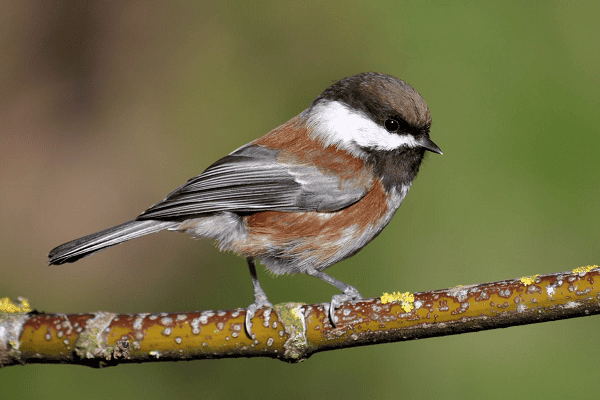
The chestnut-backed chickadee is the smallest member of the chickadee group. As its name suggests, it has a reddish-brown back. You can find this bird living in dense, shady coniferous forests along the West Coast of the U.S. and Canada. It also inhabits the inland mountain ranges of Washington, Oregon, and Idaho. Interestingly, these little birds sometimes even visit homes in cities and towns! When they communicate, their call is decidedly high-pitched, thin, and squeaky, with fewer “dees” than the other chickadees. So, keep an ear out for their unique sound when you’re exploring the forests or even in your own backyard!
Learn More About Chickadee Bird Houses
Check Our Previous Articles
| Eagles in Texas |
| Owls in Louisiana |
| Hummingbirds In Kansas |
| Falcons in Michigan |
| Best Bird Bath Fountain Ideas |
Frequenlty Asked Questions
Q1: What Are Common Types Of Chickadees?
- Black-capped Chickadee, Carolina Chickadee, Mountain Chickadee, and Chestnut-backed Chickadee are common types.
Q2: How To Identify Different Chickadee Species?
- Pay attention to markings on the head, wings, and belly, and listen to their distinct calls for accurate identification.
Q3: Where Do Chickadees Typically Live?
- Chickadees typically inhabit forests, woodlands, parks, and suburban areas across North America.
Q4: What Do Chickadees Eat?
- Chickadees primarily feed on insects, seeds, berries, and occasionally suet from bird feeders.


